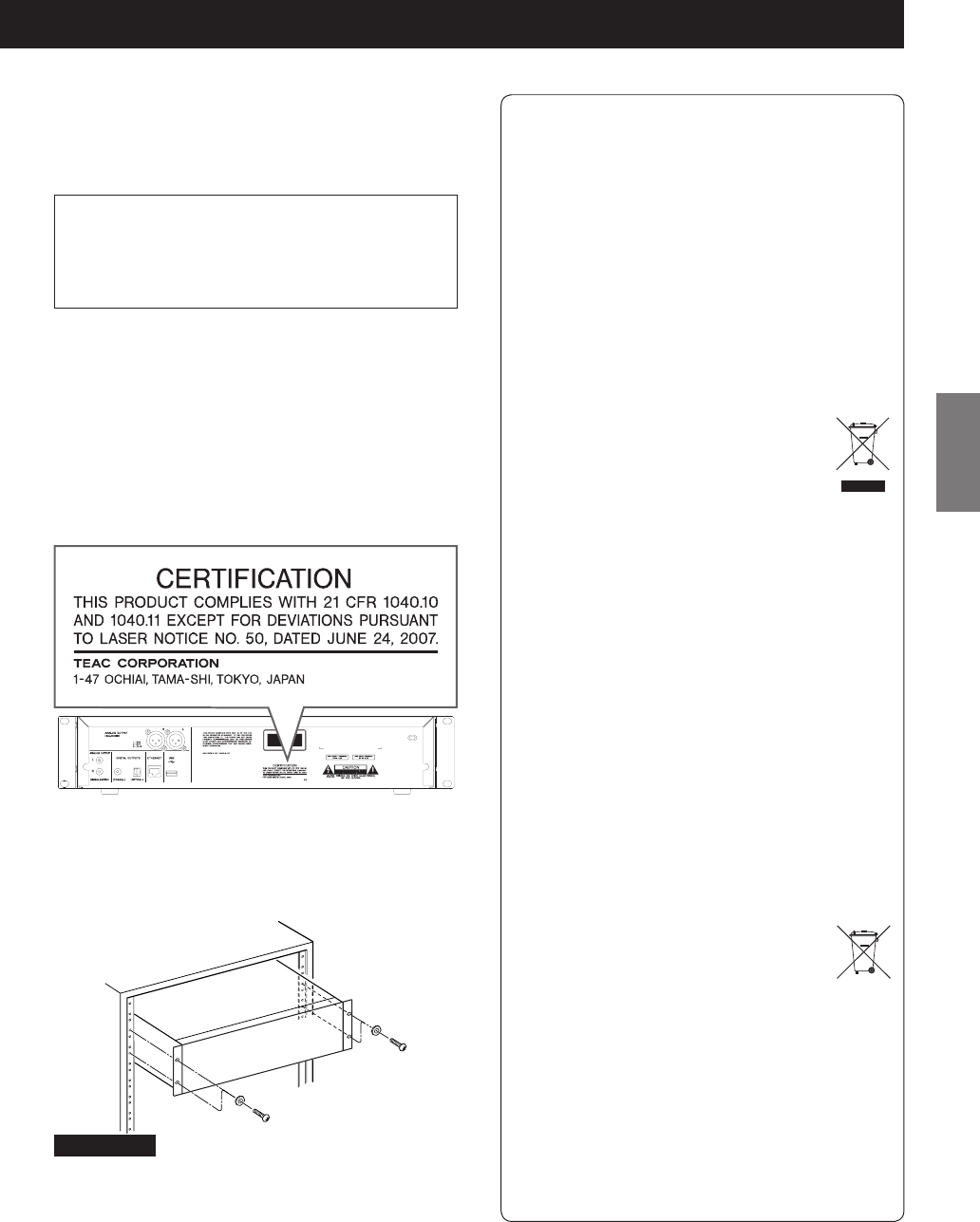
55
ENGLISH
For European Customers
Disposal of electrical and electronic equipment
(a)
All electrical and electronic equipment should be disposed
of separately from the municipal waste stream via col-
lection facilities designated by the government or local
authorities.
(b)
By disposing of electrical and electronic equipment cor-
rectly, you will help save valuable resources and prevent
any potential negative effects on human health and the
environment.
(c)
Improper disposal of waste electrical and electronic equip-
ment can have serious effects on the environment and
human health because of the presence of hazardous sub-
stances in the equipment.
(d)
The Waste Electrical and Electronic Equipment
(WEEE) symbol, which shows a wheeled bin that
has been crossed out, indicates that electrical
and electronic equipment must be collected and
disposed of separately from household waste.
(e)
Return and collection systems are available to end users.
For more detailed information about the disposal of old
electrical and electronic equipment, please contact your
city office, waste disposal service or the shop where you
purchased the equipment.
Disposal of batteries and/or accumulators
(a)
Waste batteries and/or accumulators should be disposed
of separately from the municipal waste stream via col-
lection facilities designated by the government or local
authorities.
(b)
By disposing of waste batteries and/or accumulators cor-
rectly, you will help save valuable resources and prevent
any potential negative effects on human health and the
environment.
(c)
Improper disposal of waste batteries and/or accumulators
can have serious effects on the environment and human
health because of the presence of hazardous substances in
them.
(d)
The WEEE symbol, which shows a wheeled bin
that has been crossed out, indicates that batter-
ies and/or accumulators must be collected and
disposed of separately from household waste.
If a battery or accumulator contains more than
the specified values of lead (Pb), mercury (Hg), and/or
cadmium (Cd) as defined in the Battery Directive (2006/66/
EC), then the chemical symbols for those elements will be
indicated beneath the WEEE symbol.
(e)
Return and collection systems are available to end users.
For more detailed information about the disposal of waste
batteries and/or accumulators, please contact your city
office, waste disposal service or the shop where you pur-
chased them.
Pb, Hg, Cd
This product contains a semiconductor laser system inside the
cabinet and is classified as a “CLASS 1 LASER PRODUCT”.
To prevent being exposed to the laser beam, do not try to open
the enclosure.
Laser:
Type: EP-C101
Manufacturer: GUANGDONG EVER BRIGHT GROUP CO.,LTD.
Laser output: Less than 0.3 mW
Wavelength: 790 ± 25 nm
Model for USA
This product has been designed and manufactured according to
FDA regulations “title 21, CFR, chapter 1, subchapter J, based on
the Radiation Control for Health and Safety Act of 1968”, and is
classified as class ! laser product. There is not hazardous invisible
laser radiation during operation because invisible laser radiation
emitted inside of this product is completely confined in the pro-
tective housings.
The label required in this regulation is as follows:
RACK-MOUNTING THE UNIT
Use the supplied rack-mounting kit to mount the unit in a
standard 19-inch rack, as shown below.
Remove the feet of the unit before mounting.
CAUTION
o Leave 1U of space above the unit for ventilation.
o Allow at least 10 cm (4 in) at the rear of the unit for
ventilation.


















